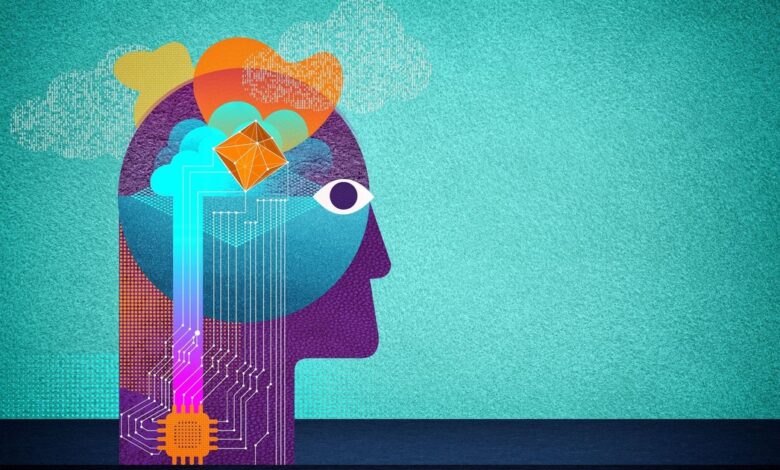The Difference Between AI, Machine Learning & Deep Learning

Artificial intelligence, deep learning, and machine learning are three closely related technologies under constant evolution.
Knowing the differences — and strengths — of each of the three can lead to a better understanding of how they work and for which applications they are best suited.
The term AI encompasses a broad range of techniques that enable machines to perform cognitive tasks such as reasoning, solving problems, making decisions, and learning.
Deep learning (DL) is a sub-field of machine learning (ML), which is a sub-field of artificial Intelligence (AI).
Understanding the Different Areas of Intelligence
Nicole Carignan, vice president of Strategic Cyber AI, denotes AI as the broader field focused on the technology that enables machines and systems to simulate human cognitive intelligence.
She describes ML as a subset of AI that enables machines to develop problem-solving models by identifying patterns in data instead of leveraging explicit programming.
“In other words, ML involves creating computer systems that can learn and improve on their own by analyzing data and identifying patterns, rather than being programmed to perform a specific task,” Carignan says.
In comparison, DL is a specialized branch of ML that uses artificial neural networks with multiple layers to replicate the thought and decision-making process of humans.
“DL algorithms can often outperform other ML techniques for certain tasks due to their ability to learn intricate patterns in large datasets,” she says.
Defining Artificial Intelligence
AI can be thought of as an umbrella term that encompasses any task performed by a computer that typically requires human intelligence.
It is a field of computer science concerned with developing software that can perform tasks requiring human-like cognitive abilities (i.e., perception, decision-making, and language processing).
Key characteristics of AI include learning (identifying patterns in data), reasoning (using mathematical models and algorithms), self-correction (improving performance through feedback), and creativity (generating novel ideas and content).
Madhu Shashanka, chief data scientist and co-founder of Concentric AI, explains started out as a subfield within the academic discipline of computer science with the goal achieving — or at least mimicking — intelligence in machines.
“AI refers to the outcome desired– intelligent behavior in machines,” he says. “The field now encompasses a variety of techniques and approaches that can help machines exhibit intelligence in the broadest sense — including machine learning.”
Machine Learning: Learning from Data
Yale Fox, member of the Institute of Electrical and Electronics Engineers (IEEE) explains with ML the programming code has been abstracted away into natural language.
“We used to write code and programming logic to get computers to behave in the way we want them to,” he says. “With machine learning, we just show them lots and lots of examples.”
Instead of hardcoding every conceivable rule into the software, the machine is provided with a vast amount of data that illustrates both the starting conditions and the desired outcomes.
The machine then analyzes this data to discern patterns, learning how to predict outcomes and make decisions based on new, unseen data.
Fox says this approach allows the machine to adapt and improve over time, unlike traditional programming methods where the software operates strictly within its initial parameters and does not change unless explicitly updated.
He points to a streaming service’s music recommendation engine, which doesn’t come pre-loaded with fixed rules about who might like what song.
“Instead, it learns by observing user behavior — what they play, skip, and how long they listen — to tailor music suggestions that become more accurate as more data is gathered,” he says.
Deep Learning: Inspired By the Brain
Robert Blumofe, executive vice president and chief technology officer for Akamai, says deep learning is inspired by how the human brain works, but it is vastly simpler and less capable.
“Like the human brain, deep learning uses a very large and highly interconnected network of elements called neurons,” he explains.
Moreover, recent, very large deep learning models such as GPT-4 are starting to approach the human brain in neuron count — probably off by just a couple of orders of magnitude — and Blumofe says these models may exceed the human brain in neuron count soon.
Jared Coyle, head of SAP’s North America AI task force, says the field of deep learning is built upon the concept of a neural network.
“The idea is that you use a computer to mimic the interactivity between neurons within the human brain by creating a large network of nodes that are interconnected,” he explains.
He adds there’s an ongoing debate as to just how well neural networks are an analogue for the operation of the human brain.
Researchers at Stanford for example argue humans learning of numerical math is well described using a neural network, while an MIT study suggests comparisons are not so close.
Blumofe admits artificial neurons used in deep learning probably shouldn’t even be called neurons, as their range of behaviors is nowhere near that of actual brain neurons.
“At best, deep learning is inspired by the human brain, but even as the scale of deep learning models rivals the human brain, their capabilities do not and will not,” he says.
Dissecting the Core Differences
Purpose and Goals: AI’s Broad Spectrum vs ML’s Specific Focus
While AI aims to develop machines that can autonomously make decisions, mirroring human intelligence to tackle novel problems, ML focuses on algorithms that interpret complex data to equip these intelligent systems.
“ML isn’t just about transforming information, it’s about enabling these systems to learn from data and make informed decisions, thus supporting the broader goals of AI,” Fox says.
Blumofe says traditional machine learning focuses on inferring information from content such as text, images, audio, and video.
“The generative AI technology that things like Bard and ChatGPT are based on is essentially the opposite of that. Generative AI is about generating new content — text, images, audio, and video — from instructions,” he says.
Complexity and Depth: From Rule-Based Systems to Adaptive Algorithms
Rule-based systems operate on explicit, fixed rules defined by human input, handling problems strictly within those predefined parameters.
They are straightforward, transparent, and static, making them less complex as they don’t adapt or learn from new data — they are more traditional and rely on concepts like “if-then” statements.
Adaptive algorithms, utilized in machine learning, exhibit a higher level of complexity: They learn from data to recognize patterns, making decisions based on statistical insights.
In machine learning, many of the algorithms used are adaptive — that is, they “learn” and “adapt” as they are used.
Blumofe explains this doesn’t necessarily mean they are more complex than rules-based systems, but they can — if trained correctly — provide more useful output that is relevant for a larger or more complex set of use cases.
“Adaptive algorithms are exactly what they sound like — they adapt and shift based on the training they receive — that is, they adjust their outputs based on the data used to teach them and the feedback the programmer gives them,” he says.
Over time, these algorithms continuously refine and adjust their behaviors based on newly encountered information, significantly enhancing their capability to manage more unpredictable or intricate scenarios.
“This dynamic learning and adaptation introduce greater depth in problem-solving compared to the more rigid nature of rule-based systems,” Fox says.
Coyle says with AI, algorithms allow for greater adaptability and the ability to generate code and train algorithms against existing datasets.
“There are myriads of options to be smarter, more adaptive, and more streamlined,” he says.
For example, a manufacturer may use AI to determine the number of materials they should order ahead of time, based on historical demand, and with current raw materials pricing.
“Right now, we see lots of individual use cases but as these use cases all begin to work together, we will end up with a very organic type of system,” he explains. “It’s the future of enterprise software.”
Practical Applications Across Industries
Blumofe says AI has been used for decades, with the first mention of the term in academia going back almost 70 years: It was first used in research labs for specialized tasks like playing games of checkers or planning motion in robots.
While there have been stops and starts on AI advancements given the limitations of computing in the 20th century, there’s seen a boom since the 2010s with the rise of deep learning.
“Today, we see AI embraced across industries, including robot assembly lines, fraud detection in finance, drug discovery, and even your personalized online shopping cart,” he says. “It’s also driving cutting-edge innovations, such as autonomous driving and climate change mitigation.”
AI Best Industry Applications
Practical AI applications could be found in document processing, sentiment analysis, robotics, decision making, forecasting and predictions, and conversational chatbots.
Coyle points to AI’s suitability for visual identification, using the example of someone on a business trip working in the professional services industry as a consultant.
“Every receipt from your trip must be available and audited,” he says. “By taking a photo of your receipt, within your company-sponsored travel software, the system will audit the image and automatically add it to your experience report.”
He points out that AI is being run by more than 20,000 organizations today.
Carignan notes AI is being used across numerous industries to automate processes and improve productivity.
“For example, in customer service AI tools like chatbots can help consumers by answering questions and providing recommendations,” she says.
In marketing, AI can be used to analyze customer data and identify trends, helping businesses create more targeted marketing campaigns and improve sales forecasting.
“AI can even be used to help businesses optimize their supply chains by predicting demand, identifying bottlenecks, and improving logistics planning,” Carignan says.
Machine Learning’s Niche Expertise
Anthony Loss, director of solution strategy at ClearScale, says ML expertise is particularly valuable in any situation where you need a model to perform predictions based on past data.
“More specifically, feeding the model with clean and valuable data, and model tuning to continuously enable the model for success,” he says. “Human intervention is necessary for these tasks to have a model make accurate predictions.”
Coyle explains that within an organization, ML expertise is particularly valuable when a large, context-rich dataset already exists and is available.
“Large datasets can be used to train various types of models and algorithms to automate actions in the real world,” he says.
For instance, knowing that a piece of equipment is vibrating unusually is helpful. What is even better is knowing how much it will cost to replace versus repair the item.
ML can also help determine when the item might break again, and help you understand the impact of the impact of any delay in use.
Deep Learning in the Industry
Deep learning is often embraced when there is a need to process massive amounts of unstructured data, such as images or natural language.
It offers advantages to improve accuracy and increase scale, as there is little need for manual feature engineering.
Graham Brooks, partner at .406 Ventures, explains DL is very good at tasks that are easy for humans and traditionally hard for computers, because it approaches problems more holistically and iteratively.
“For example, it is better than humans at tasks like reading and writing,” he says.
He says industry examples where DL cold have applications include customer service, reading product manuals to extract relevant information and provide scripts to customer service reps, or insurance, extracting information from insurance claims and pushing it into claims systems, automating work done by large BPOs.
In healthcare, DL could be used to convert voice recordings of a patient visit directly to doctors’ notes and extracting the right billing codes, while in the legal profession, DL could be used to help research relevant case law, summarize and understand discovery information and even draft legal documents.
When it comes to the financial industry, Brooks says DL could help in summarizing, tracking, and understanding massive amounts of info on public companies, enabling analysts to focus on thesis generation and trading versus spending all their time trying to consume the available data.
Blumofe adds deep learning is an excellent tool for classifying complex problems, one example being cloud security.
“It can be used to determine, in real time, if web traffic is a bot or not, if an API call is friend or foe, or if a query moving through a corporate network is legitimate or malware,” he says.




